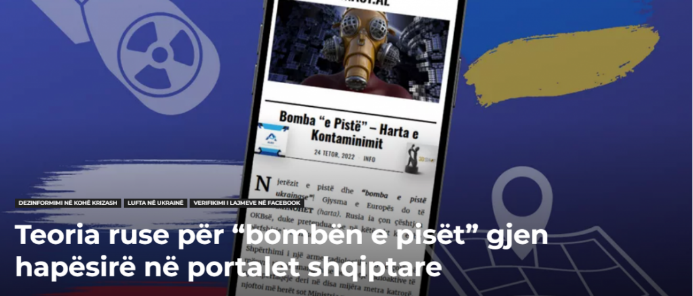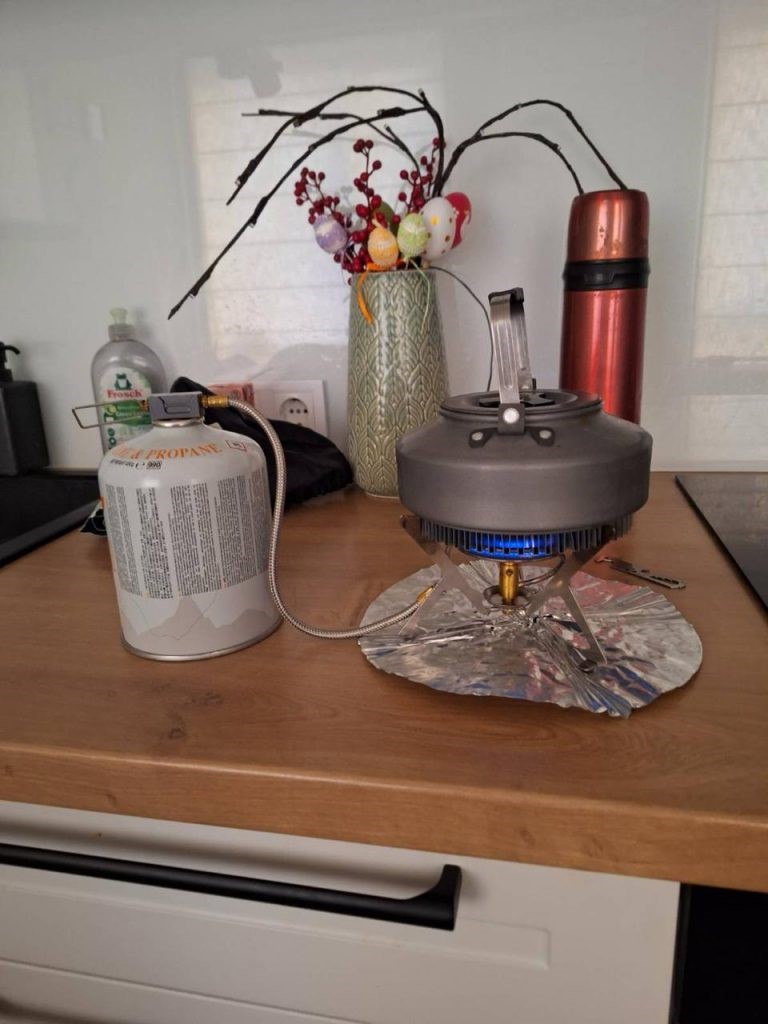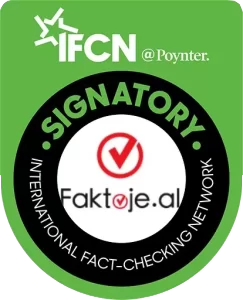By Viola Keta
Journalist and Professor Olena Churanova visited Tirana to share StopFake Ukraine’s effective tactics in countering Russian disinformation amidst the ongoing war in Ukraine and its ripple effects across Europe. Addressing students, educators, and colleagues at Faktoje, she underscored the paramount importance of factual reporting in challenging misleading narratives. Churanova delved into the utilization of Artificial Intelligence and historical manipulation techniques in shaping public opinion, emphasizing their persistent threat, even during electoral processes. She shed light on the daily realities endured in Ukraine and advocated for international solidarity in the fight against misinformation.
Viola Keta
According to Olena Churanova, the coverage provided by various platforms, television channels, websites, or newspapers falls short in elucidating the profound impact of the protracted conflict in Ukraine. As a lecturer at the Mohyla Journalism Academy, University of Kiev, and an editor at Stop Fake, she shared her insights during a presentation titled “Countering Disinformation in Central Europe: Stop Fake’s Best Practices,” supported by the Google News Initiative at Beder University in Tirana.
Churanova, the first Ukrainian fact-checker to conduct such training in Albania since the Russian aggression in 2022, highlighted the significance of a mobile application installed on every Ukrainian citizen’s phone, which alerts them to imminent bombing threats. After each alarm, there was a smile on Olena’s face that couldn’t conceal her concern for the safety of her two sons, aged 9 and 3, and her husband serving in the military in Kiev.

Russian Disinformation Tactics
‘In reality, Russia employs the same tactics, even those utilized during the Soviet Union era, to disseminate disinformation narratives. We’ve been grappling with numerous narratives and various techniques since 2014, but this escalated significantly during the full-scale invasion in 2022’ Churanova states, elucidating how disinformation and manipulation of public opinion in Ukraine, orchestrated by the aggressor, seek to ‘cleanse people’s minds’ alongside the daily struggle of resisting the war.
‘Moreover, Artificial Intelligence, particularly with deepfake videos or images, plays a significant role, especially during conflict scenarios, precisely when people are in need of making decisions, and Russia capitalizes on these techniques. However, it’s crucial for everyone to understand why it’s imperative that when individuals are faced with significant decisions, they base them on reliable information rather than misinformation,’ Churanova explains. She acknowledges that a considerable number of fake news and narratives driven by Russia, from her perspective, have also circulated in Albania.
During her presentation to the students, Churanova highlighted the case of the ‘dirty bomb’. However, unlike the disinformative impact and distortion of perception among audiences in other countries (including Albania), in Ukraine, this narrative is ‘marketed’ to justify the killing of innocent people, according to the editor and professor from Stop Fake. She stresses the importance of collaboration with as many dedicated organizations in tracking and combating disinformation as possible, as they possess a better understanding of the context and media landscape.

The lecturer’s guidance for journalism students and contemporary journalists, while drawing parallels regarding the impact of disinformation in Albania and the Balkans, is: ‘The region we’re discussing is irrelevant. What matters is grasping the essence of disinformation – intentionally circulated information aimed at causing harm – and understanding that anyone can disseminate such damaging content. The appropriate response is reliance on credible facts. We must learn how to rectify and analyze disinformation to unveil the underlying narratives behind fake news and understand how to effectively combat it.
The list of disinformation narratives is led by the war in Ukraine
Since the onset of Russian aggression ‘on a full scale’ in 2022, as referenced by Churanova, Faktoje has conducted at least 200 verifications related to narratives disseminated on this subject. The initial verification, categorized as ‘Disinformation (and propaganda) during crises’, is linked to the assertion made by Russian chief diplomat Lavrov, mere days before the official commencement of the attack on February 24, 2022, alleging the deployment of mercenaries from Albania and Balkan countries to Ukraine to confront Russia. This narrative, portraying the aggressor as a victim, as noted by experts in disinformation tactics, was followed by numerous others, with shares on social media platforms garnering thousands, if not tens of thousands, of clicks.
Even the database established by the European Fact-Checking Network, bolstered by contributions from at least 40 Fact-Checking organizations operating throughout Europe, underscores that since February 19 onwards, the war in Ukraine has been the ‘preferred’ topic for disseminating disinformation and molding public opinion.

Source: https://elections24.efcsn.com/statistics
These data take on a special significance during election periods, such as the case of the campaign for the European Parliament elections held in early June 2024.
Who is Interested in Disinformation during Elections
Olena Churanova provides a clear explanation for the increase in disinformation during elections:
‘Various political parties use this issue to gain some points, and it also depends on the interests of this or that party. For example, we know that in Europe, there are many parties financed by Russia. These parties will spread the narratives they’ve been instructed to, such as there’s no need to support Ukraine, there’s no need to help Ukraine, etc.
‘Life in Ukraine is Like Playing ‘Russian Roulette’ Every Day
To depict life in Ukraine during the war, Churanova shares the daily reality of her family, relatives, and colleagues:
‘We’ve been living in survival conditions for a decade or more. I have a nine-year-old son. He was born during the war and doesn’t know any other reality. It’s very hard to express and accept that in the 21st century, your children have to experience and understand what a ballistic missile is, what drones are. My 9-year-old son knows what the alarm means and knows that we have to go to the corridor. He knows where to place the mattress whenever he hears the alarm sirens.
In all our families and among our staff, we have people serving in the military. Living in these conditions for so long can affect health and emotions.
In Kiev, we’ve started experiencing power outages, and unfortunately, this will become a common occurrence for us. We have to work in these conditions; we have to adjust our work schedule to the power outage schedule,’ Churanova explains during the conversation, illustrating the discussion by showing us moments captured on her phone during power outages.

In Kiev, it’s a typical morning without electricity in Olena Churanova’s home.
Some of her colleagues have left Ukraine but continue their fact-checking work remotely.
‘For me and my family, I made the decision not to leave. Because this is my homeland. And for me, psychologically, it’s better to be here, in my own country’, says the journalist.






